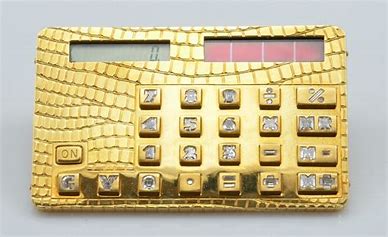Are you curious about the value of your old gold jewelry, coins, or other precious metals? Have you tried to find out what they are worth, but been confused by the various units and measurements used in the industry? Fear not, because a gold calculator can help you easily estimate the value of your precious metals. In this article, we will explore how using a gold calc can help you unlock the value of your precious metals and make informed decisions when it comes to selling or trading them.
Firstly, let’s discuss the basics of how a gold calculator works. A gold calculator is a tool that allows you to input the weight, purity, and current market price of a particular precious metal, such as gold, silver, or platinum, and receive an estimated value in return. These calculations are based on the current market conditions and can give you an idea of how much your item is worth if you were to sell it. It is important to keep in mind that the value your item would receive if you sold it is often less than the value it could have for collectors or investors.
Secondly, it’s essential to understand the different units and measurements used in the precious metals industry. Although gold is commonly measured in troy ounces, other precious metals may be measured in grams, pennyweights, or even tael. A troy ounce is slightly heavier than a regular ounce, weighing in at 31.1 grams. A pennyweight is one-twentieth of a troy ounce, and a tael is a unit of weight used in Chinese culture. Understanding these units can help you accurately input the weight of your precious metal into a gold calculator, leading to a more precise estimate of its value.
Next, consider the purity or fineness of your precious metal. For instance, most gold jewelry is not 24-karat pure, as jewelry makers add other metals like copper or silver for durability. Gold purity is measured in karats, with 24-karat gold being 99.9% pure. To calculate the purity of your piece of gold jewelry, look for a stamp or hallmark on it that indicates its karat weight. For other precious metals, such as silver or platinum, the purity is often expressed as a percentage, such as .925 or .999.
Once you have these measurements, you can input them into an online silver calc or use a physical calculator to estimate the value of your item. It’s important to keep in mind that these estimated values can vary depending on the current market conditions, which can fluctuate rapidly. It’s always a good idea to regularly check the prices of precious metals to make sure you are getting the best value for your items.
Finally, it is essential to remember that a gold calculator is only an estimate. The values provided by a calculator are based on averages and may not take into account the unique characteristics of your jewelry or other precious metal. The condition, age, and rarity of your piece can all influence its value, factors that a calculator cannot account for. Therefore, while a gold calculator can be a helpful starting point, it’s always a good idea to get a second opinion from a reputable dealer or appraiser before selling or trading your precious metal.
Conclusion:
A gold calculator can be an extremely helpful tool for estimating the value of your old jewelry, coins, and other precious metals. By understanding the fundamentals of how these calculations work and the different units used in the industry, you can easily input the necessary information and receive an estimated value in return. However, it is important to remember that these values are only estimates and may not take into account the unique factors that make your item valuable. Therefore, it’s always a good idea to get a professional appraisal before making any decisions about selling or trading your precious metal. By using a gold calculator and seeking out expert advice, you can unlock the full value of your precious metals and make informed decisions about managing your investments.

